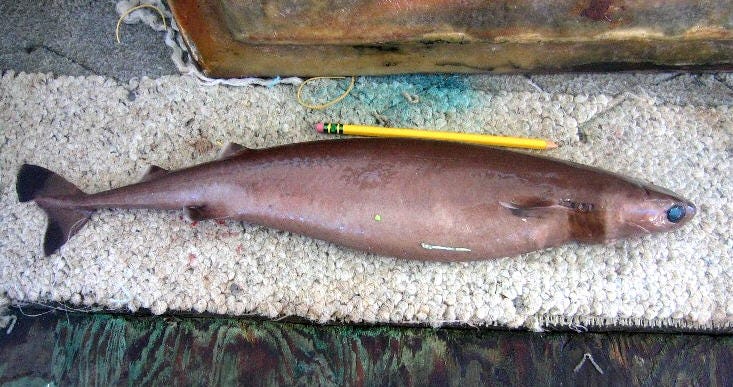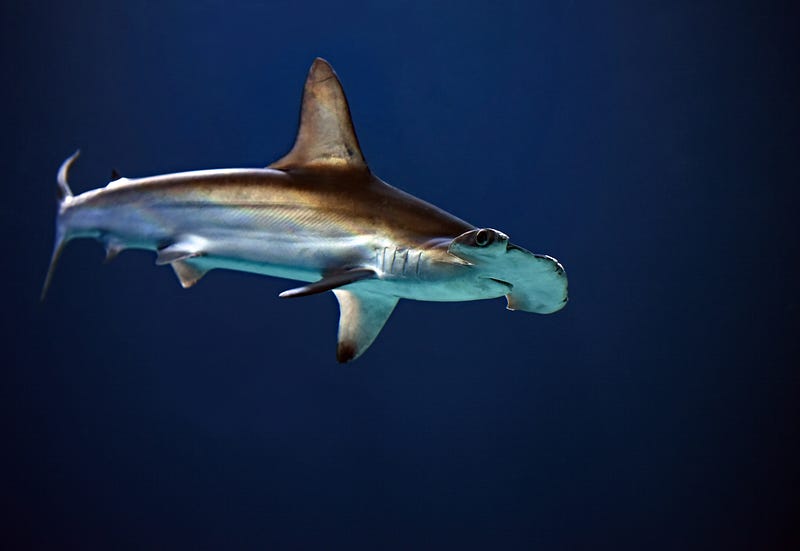The Remarkable Shark That Disabled a Nuclear Submarine
Written on
Chapter 1: The Unforeseen Attack
In the 1970s, amidst significant events like the return of Apollo 13, the breakup of The Beatles, and the escalating tensions of the Cold War, an American nuclear submarine was on a covert mission. While searching for Russian submarines, an unexpected assault occurred. Their radar and microphones were rendered completely inoperable, leaving the crew in a state of panic. Was this a new stealth technology developed by the Russians, or something entirely different?
Once the submarine was docked, the extent of the damage was revealed. A single, sizeable hole had been made in the radar system, necessitating a complete replacement rather than a simple repair.

The engineers discovered a round hole in the radar's rubber casing, which allowed oil to escape and seawater to enter, destroying the sensitive electronics inside. Upon closer examination, the hole exhibited saw marks rather than clean cuts, raising suspicions of a mechanical culprit. Could it be a Russian mini-submarine targeting the weaknesses of the U.S. naval fleet?
Fear gripped the officers. If the Russians had developed technology that allowed them to sneak up on submarines undetected and inflict such damage, they were in serious danger. However, further investigation revealed tooth marks on the rubber, suggesting that the assailant was something that could maneuver close enough to the submarine's microphones without being detected—fish. Could this indicate a biological threat had emerged to challenge the U.S. Navy?
Fortunately, someone recognized the shape and markings of the bite, identifying it as the work of one of the ocean's more peculiar sharks: the cookie cutter shark.

Chapter 2: The Cookie Cutter Shark's Unique Feeding Method
Indeed, it was not a gigantic megalodon or a stealthy Russian submarine, but rather a small, cat-sized shark that employs one of the most unusual predation techniques in the ocean.
Cookie cutter sharks reside in the depths of tropical oceans worldwide. Their diminutive size and slow swimming speed require them to evade larger predators, leading to unique adaptations. Their underbelly emits light to blend in with the overhead twilight, while their dark collar mimics the silhouette of smaller fish, luring prey in for a closer look.
What’s astonishing is that cookie cutters target some of the ocean's largest creatures, including sharks, whales, and even humans. How do such small sharks feed on animals that can be thousands of times their size? Their specialized jaws and biting technique play a crucial role.

These sharks can open their mouths to an impressive 180 degrees, forming a perfect circle with their upper and lower jaws. Their forward-facing, serrated teeth, combined with fleshy lips, enable them to latch onto their prey effectively. When a larger animal approaches, the cookie cutter swiftly swims in, attaches itself to the flank, and shakes its head side to side, creating a distinctive circular bite while securing a meal.
But why would such a small creature target a nuclear submarine? Surely, it can differentiate between a sub and a whale.

Sharks possess highly sensitive electroreceptors in their snouts, allowing them to detect the electric signals emitted by other animals. This ability enables species like the hammerhead to hunt buried prey. It’s plausible that the electromagnetic signals from the submarine's radar attracted the cookie cutter, resulting in its infamous bite.
Traditional submarines, being noisier, likely deter cookie cutters. However, the 1960s and 1970s marked the advent of silent nuclear submarines, which both the U.S. and Russia employed to evade detection. This stealth technology, unfortunately, allowed cookie cutters to approach undetected.

To a cookie cutter, a nuclear submarine might resemble just another massive whale swimming quietly through the ocean, yet one that emits a very strong electromagnetic field.
Fortunately, the solution to this unusual threat was straightforward—reinforcing the softer parts of the submarine. Modern submarines are now secure against these tiny predators. However, this incident serves as a potent reminder of the fierce and enigmatic life lurking beneath the ocean's surface, where even the smallest creatures can pose significant challenges.
So, while formidable beasts capable of disabling a nuclear submarine do exist in the depths, they may not be the terrifying monsters one might expect. Instead, it was a small, semi-parasitic shark that demonstrated the ocean's capacity for strange and unexpected encounters.
The first video titled "How a Little Shark Destroyed the US Navy" delves into the intriguing story of how this unassuming creature managed to impact the naval forces significantly.
The second video, "Giant Shark Attacks Submarine…Why?" explores the circumstances and reasons behind the cookie cutter shark's unexpected encounter with the submarine.